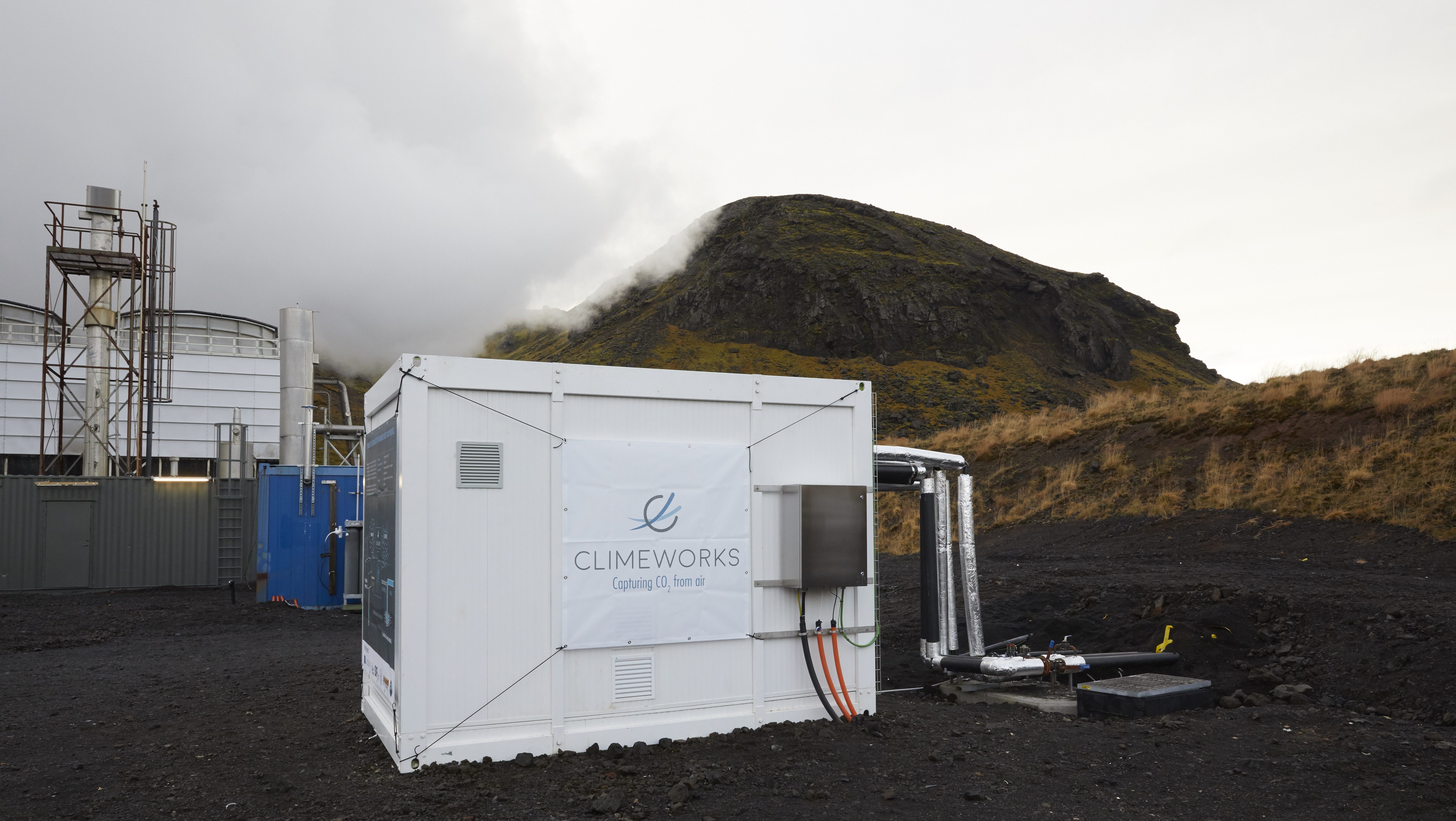The world's first thermal power plant with a negative CO₂ emission was put into operation.

Direct carbon dioxide capture module with tower cooler at Hedlisheidi geothermal power plant in Iceland. Photo: Climeworks
Mankind does not manage to reduce greenhouse gas emissions and stop the spiral heating the planet because of the greenhouse effect. Politicians agree to at least keep the amount of CO₂ at the current level in order to save the planet from the most destructive effects of global warming. But they don’t work out well: for the last 200 years, carbon dioxide has continued to accumulate in the atmosphere at a rate of about 4 gigatons per year . Accumulation does not stop. Moreover, it threatens to become irreversible when gas emissions from the soil begin to increase with increasing temperature, further unwinding the spiral. Now the plants and plants of the Earth are not able to process, and the world ocean - to dissolve the amount of CO₂, which is emitted by terrestrial thermal power plants and transport to the internal combustion engine.
Some scientists believe that it is necessary not only to rely on nature, but also to make an active contribution to air purification, otherwise nature will not cope: now plants and trees process in different years from 20 to 80% of CO₂ emissions. So, the scientists propose to more actively put into operation the modules for direct capture of carbon dioxide from the air. They bind atmospheric CO₂ and deposit it in the basalt rock, that is, they drive it underground, from where it came from.
In May 2017, Climeworks, a manufacturer of direct carbon capture modules from air (DAC, Direct Air Capture), announced the commercial launch of the world's first plant for the production of CO₂ from the atmosphere . This Swiss-based commercial enterprise produces CO₂ at a cost of no more than $ 600 per ton and sells fertilizers to nearby farms, as well as components for the manufacture of fuel. Each year, the plant will extract 900 tons of carbon dioxide from the atmosphere, and the cost price is planned to be reduced to $ 100 per ton. The competitors from Carbon Engineering have the same goal, but another competitor of Global Thermostat aims at a cost price of $ 50 per ton. All of these startups produce DAC installations for commercial production of CO₂ from the atmosphere.
Thus, the extraction of 10 gigatons of CO₂ to clean the atmosphere will cost $ 500 billion annually.
Now Climeworks has implemented another unusual project . This time, DAC modules were installed on one of the largest geothermal power stations in the world, Hedlisheidi in Iceland. This power plant produces about 300 megawatts of electricity and 130 megawatts of heat for Reykjavik, which is located 25 km north-west of the station.

Geothermal Power Station Hedlisheidi in Iceland. Photo: Climeworks
Geothermal Power Plant Hedlisheidi was the first power station in the world that does not emit carbon dioxide into the atmosphere, but absorbs it - and produces mineralization of carbonates in basalt rock. So far, the station extracts only 50 tons of carbon dioxide per year from the atmosphere (this is a tiny amount: this proportion of emissions comes from only one American family). But this is only the beginning of a pilot project.

Mineralization of carbonates in basalt rock
In this case, the system works as follows. The air passes through a filter impregnated with amines - organic compounds derived from ammonia. They bind carbon dioxide from the atmosphere. Then CO₂ is removed from the filter by heating from a geothermal heat source and dissolved in water (27 kg of water per kilogram of gas). Sparkling water is pumped underground to a depth of more than 700 meters. There, it reacts with basalt rock, and CO₂ is converted to a solid mineral (see the 2016 scientific article describing a chemical reaction). This is the mineralization of carbon dioxide.

The process of extracting carbon dioxide from the air and its further mineralization under the ground. Illustration: Climeworks
This project, called CarbFix2, can be duplicated at other geothermal stations that are built on a basalt foundation. According to the system developers, CarbFix2 duplicates the processes that occur in nature, but speeds them up many times over. The CarbFix2 project has an ambitious task to produce and solidify 1% of all global carbon dioxide emissions by 2025. One percent is a lot, given the millions of tons of annual CO₂ emissions from industry and transport.
The CarbFix2 project is implemented by the energy company Reykjavik Energy, which received funding from the European Union as part of the Horizon 2020 research and innovation program.
Only by active actions, removing extra CO₂ from the atmosphere, can you try to stop the warming up of the planet. According to some scientists , a simple limit on emissions is not enough. Mankind will need technologies for extracting CO₂ from the atmosphere as early as the 2030s, just to keep the temperature of the Earth at 1.5 ° C relative to the pre-industrial level.
To extract CO₂ from the atmosphere, it is proposed to use the above-mentioned DAC installations on clean electricity, and to additionally plant forest in large areas of land with further mineralization of carbon in the ground.
In addition, some experts have expressed concern that the promotion of expensive systems “with a negative CO₂ emissions” distracts from the main and necessary step - reducing carbon dioxide emissions right now.
All Articles